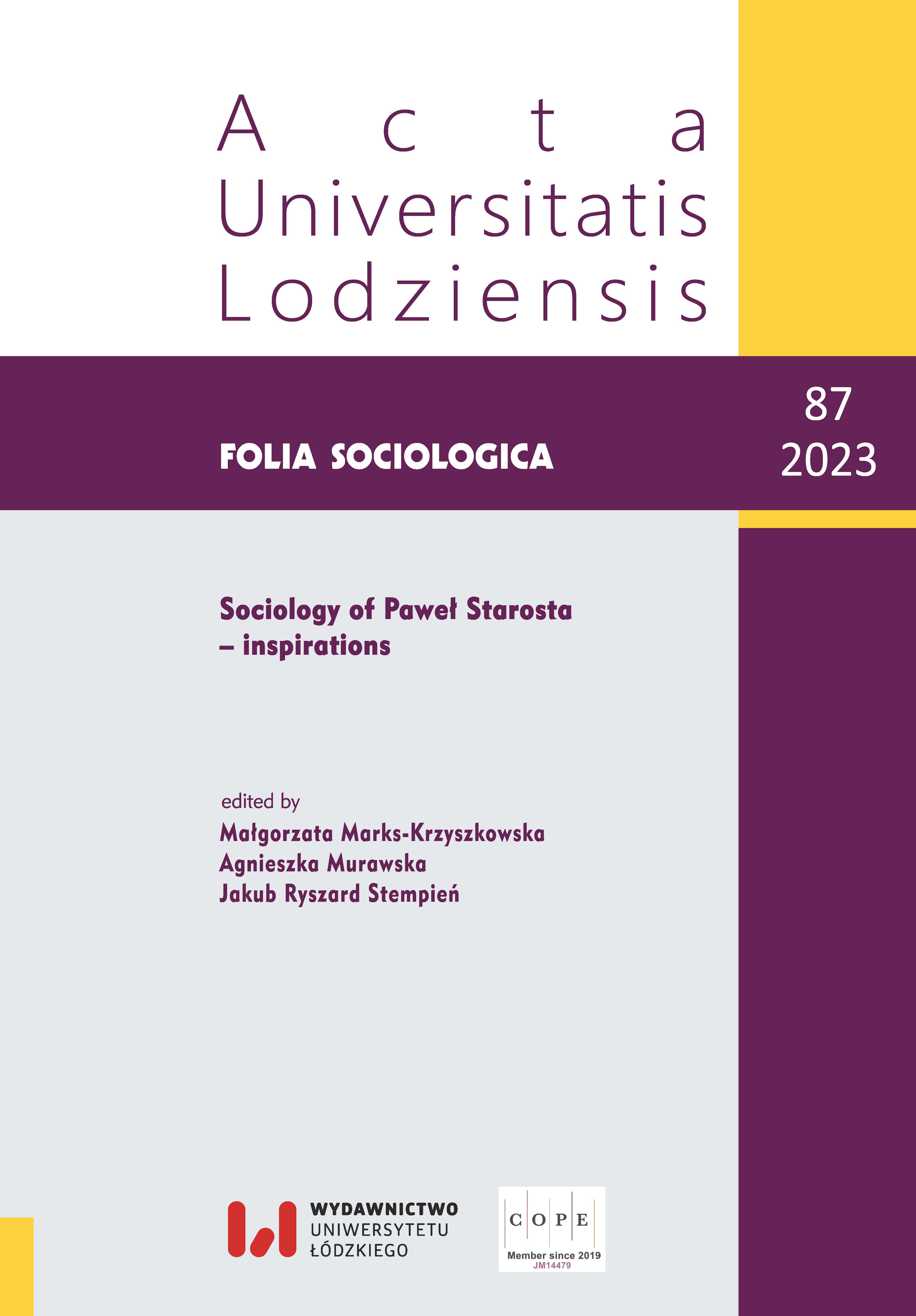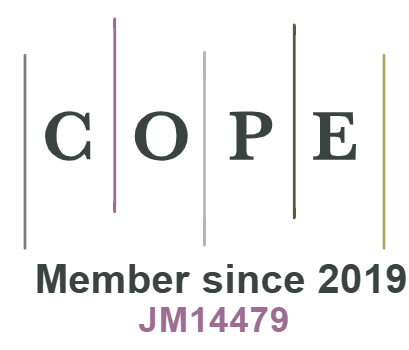Rustica Nova. Nowa wieś na Węgrzech na przełomie tysiącleci
DOI:
https://doi.org/10.18778/0208-600X.87.08Słowa kluczowe:
depesntyzacja, reforma rolna, społeczność, tradycje, hybrydyzacja, redefinicja kulturowaAbstrakt
Artykuł stanowi kompleksowe spojrzenie na złożoną transformację obszarów wiejskich na Węgrzech na przełomie tysiącleci. Postsocjalistyczna reprywatyzacja gruntów zapewniła ziemię ponad 2 milionom rodzin, ale do czasu przystąpienia do UE (2004 r.) rozwinęła się już wysoce skoncentrowana struktura dużych posiadłości. Populacja wiejska, w społeczeństwie węgierskim, nieco się zmniejszyła, ale jej odsetek pozostał wysoki na poziomie około jednej trzeciej, a wraz z mieszkańcami miast wiejskich na poziomie 50%. Pomimo zachowanych i hybrydowych struktur nastąpił zanik tradycyjnego chłopstwa, a w wyniku turystyki powstał nowy rodzaj relacji między miastem a wsią. Rozpoczęła się kulturowa reinterpretacja wsi i jej tradycji. Mimo to niekorzystne warunki społeczne nadal silniej koncentrują się na wsiach niż w miastach.
Bibliografia
Ángyán J. (2012), Föld- és birtokpolitika alulnézetből, Megyei esettanulmányok.
Google Scholar
Ángyán J. (2014), Mi lesz veled magyar föld, mezőgazdaság, vidék?, [in:] B. Andrásfalvy, J. Ángyán, G. Márai, G. Molnár, E. Tanka (eds.), A magyar föld sorsa, Agroinform Kiadó, Budapest, pp. 101–108.
Google Scholar
Az állami földbérleti rendszer értékeléséhez. IV. jelentés a földről. Gödöllő, http://www.kielegyenafold.hu/userfiles/file/IV_jelentes_a_foldrol_20121215_NG_2013042 2.pdf
Google Scholar
Borsos E., Csite A., Hella F. (1999), Rendszerváltás utáni falusi sorsforduló Ököritófülpösön, “Szociológiai Szemle”, pp. 95–119.
Google Scholar
Csite A., Kovách I., (1995), Posztszocialista átalakulás Kelet- és Közép Európa rurális társadalmaiban, “Szociológiai Szemle”, vol. 2.
Google Scholar
Csite A., Kovách I., (2002), Vidéki történet, [in:] I. Kovách (ed.), Hatalom és társadalmi változás. A posztszocializmus vége, Napvilág Kiadó, Budapest, pp. 219–309.
Google Scholar
Csurgó B. (2007), Képek és képzetek a mai magyar vidékről, [in:] I. Kovách (ed.), Vidékiek és városiak, L’Harmattan – MTA PTI, Budapest, pp. 45–67.
Google Scholar
Csurgó B. (2013), Vidéken lakni és vidéken élni, Argumentum, Budapest.
Google Scholar
Glózer R. (2007), Falusi politikák. Közösségtanulmány. Módszertani jegyzet, Néprajzi Múzeum – PTE-BTK Kommunikáció-és Médiatudományi Tanszék, Budapest, pp. 147–160.
Google Scholar
Granberg L., Kovách I., Tovey H. (eds.), (2001), Europe’s Green Ring, Ashgate, Aldershot–Burlington–Singapore–Sydney.
Google Scholar
High C., Nemes G. (2007), Social Learning in LEADER: Exogenous, Endogenous and Hybrid Evaluation in Rural Development, “Sociologia Ruralis”, no. 47(2), pp. 103–119. https://doi.org/10.1111/j.1467-9523.2007.00430.x
Google Scholar
DOI: https://doi.org/10.1111/j.1467-9523.2007.00430.x
Kelemen E., Megyesi B. (2007), The Role of Collective Marketing Initiatives in the Hungarian Agriculture, “Eastern European Countryside”, no. 13(1).
Google Scholar
Kotics J. (2007), Magyar közösségkutatás története a 20. században, [in:] É. Kovács (ed.), Közösségtanulmány. Módszertani jegyzet, Néprajzi Múzeum – PTE-BTK kommuniáció- és Médiatudomány Tanszék, pp. 23–43.
Google Scholar
Kovách I. (1994a), The Privatization and the Future of Family Farms in East-Central Europe, “Sociologia Ruralis”, vol. 34(4), pp. 369–382. https://doi.org/10.1111/j.1467-9523.1994.tb00819.x
Google Scholar
DOI: https://doi.org/10.1111/j.1467-9523.1994.tb00819.x
Kovách I. (2001), De-peasantisation of Hungarian Rurality, [in:] L. Granberg, I. Kovách, H. Tovey (eds.), Europe’s Green Ring, Taylor & Francis, pp. 66–89. https://doi.org/10.4324/9781315255811-2
Google Scholar
DOI: https://doi.org/10.4324/9781315255811-2
Kovách I. (2007), A múlt és jelen vidékképe. Bevezetés, [in:] I. Kovách (ed.) Vidék- és falukép a változó időben, Argumentum, Budapest, pp. 7–11.
Google Scholar
Kovács D. (2003a), Falusi vendéglátás Magyarországon, Agroinform Kiadó, Budapest.
Google Scholar
Kovács D. (2003b), A falusi turizmus hagyományai, Mezőgazda Kiadó, Budapest.
Google Scholar
Kovács É. (ed.), (2007), Közösségtanulmány. Módszertani jegyzet, Néprajzi Múzeum – PTE-BTK kommuniáció- és Médiatudomány.
Google Scholar
Lányi A. (2009), Porcelán az elefántboltban. Az ökológiai politika kezdetei Magyarországon, Heti Válasz Kiadó, Budapest.
Google Scholar
Pataki Gy., Bodorkós B., Balázs B., Bela Gy., Kelemen E., Kohlheb N. (2011), A vidékfejlesztés demokratizálásának lehetősége: részvételi akciókutatás a Mezőcsáti Kistérségben, [in:] Gy. Pataki, A. Vári (eds.), Részvétel – akció – kutatás: magyarországi tapasztalatok a részvételi-, akció- és kooperatív kutatásokból, MTA Szociológiai Kutatóintézet, Budapest, 28–51.
Google Scholar
Starosta P. (1998), Inhabitants’ Feeling of Social Bonds with Rural and Small Town Communities in Bulgaria, Poland and Russia, [in:] L. Grandberg, I. Kovách (eds.), Actors on Changing European Countryside, Institute for Political Sciences, Budapest, pp. 104–131.
Google Scholar
Starosta P., Draganova M. (1999), Social Identification with Local Communities and the Globalization Process in Rural areas of Eastern Europe, [in:] Ch. Kasimis, A. Papadopoulos (eds.), Local Responses to Global Integration, Ashgate, Aldershot, pp. 133–152. https://doi.org/10.4324/9780429445736-7
Google Scholar
DOI: https://doi.org/10.4324/9780429445736-7
Tímár J. (2007), Társadalmi nemek, aprófalu- és közösségtanulmányok, [in:] É. Kovács (ed.), Közösségtanulmány. Módszertani jegyzet, Néprajzi Múzeum – PTE-BTK Kommunikáció- és Médiatudományi Tanszék, Budapest–Pécs, pp. 115–133.
Google Scholar
Pobrania
Opublikowane
Wersje
- 30-11-2023 - (2)
- 30-11-2023 - (1)
Jak cytować
Numer
Dział
Licencja

Utwór dostępny jest na licencji Creative Commons Uznanie autorstwa – Użycie niekomercyjne – Bez utworów zależnych 4.0 Międzynarodowe.










